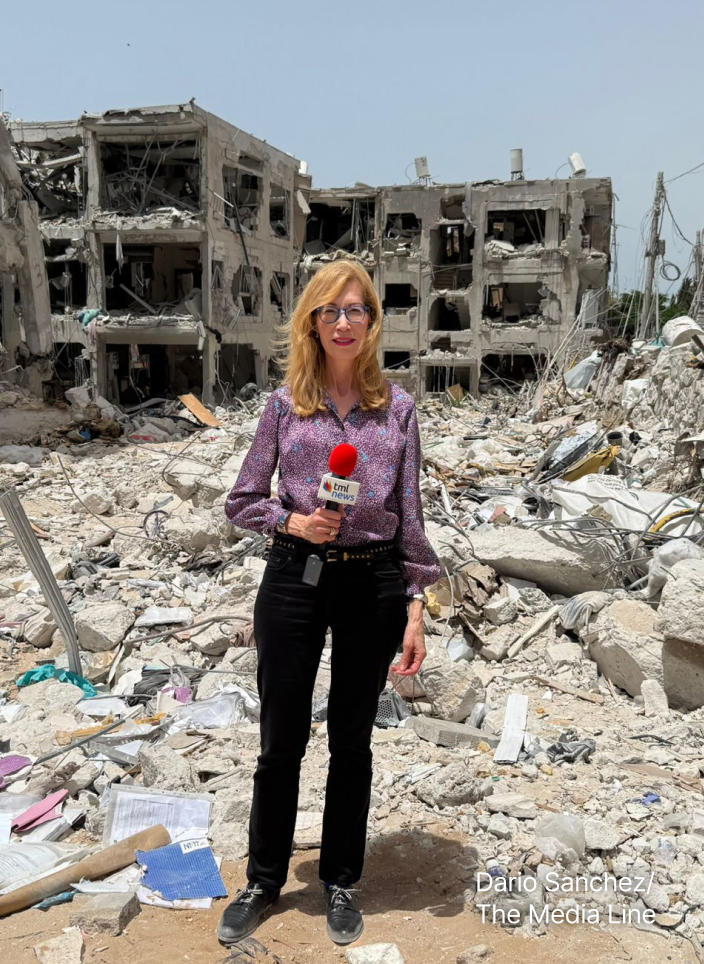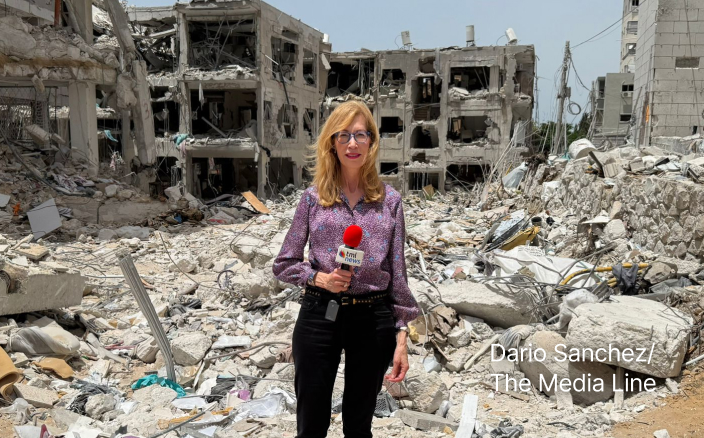The United States military struck three nuclear sites in Iran early Sunday, joining Israel’s effort to halt the Islamic Republic’s nuclear ambitions.
B-2 Spirit stealth bombers targeted the Fordo, Isfahan, and Natanz facilities, all believed to house critical components of Iran’s nuclear program.
US President Donald Trump said the sites were “completely and fully obliterated,” although the precise impact of the strikes remains unclear.
The American operation followed more than a week of Israeli strikes across Iran. Those earlier attacks targeted nuclear infrastructure and damaged air defense systems, effectively paving the way for the US to deploy capabilities Israel lacks, particularly at the heavily fortified Fordo site.
“From what is known, in addition to the airstrikes against the three sites, cruise missiles were fired from American submarines,” Tal Inbar, a senior research fellow at the Missile Defense Advocacy Alliance, told The Media Line. “These cruise missiles have special warheads fitted for such targets that are highly fortified.”
President Trump warned Iran not to retaliate against US interests in the region and said further strikes could follow.
In May 2025, the International Atomic Energy Agency (IAEA) confirmed Iran held a stockpile of 408.6 kg of uranium enriched to 60%.
Col. (res.) Dr. Uri Nissim Levy, a lecturer at Afeka College of Engineering in Tel Aviv and chair of the World Nuclear Forum 193, said the fate of that uranium is one of the key questions following the strikes.
There is enough material there for a bomb
“These could be easily transported anywhere, in pickup trucks, as they are stored in sealed metal containers,” Levy told The Media Line. “There is enough material there for a bomb.”
A 60% enrichment level requires more material to build a bomb than weapons-grade uranium, but the quantity reported by the IAEA—over 400 kg—is far beyond the threshold. According to IAEA data, just 42 kg of uranium enriched to that level is enough to produce a nuclear weapon.
Give the gift of hope
We practice what we preach:
accurate, fearless journalism. But we can't do it alone.
- On the ground in Gaza, Syria, Israel, Egypt, Pakistan, and more
- Our program trained more than 100 journalists
- Calling out fake news and reporting real facts
- On the ground in Gaza, Syria, Israel, Egypt, Pakistan, and more
- Our program trained more than 100 journalists
- Calling out fake news and reporting real facts
Join us.
Support The Media Line. Save democracy.


Media reports on Sunday cited unnamed Iranian officials who claimed the uranium had been moved from Fordo before the attack.
“It is too soon to determine,” said Israel Defense Forces (IDF) spokesperson Brig. Gen. Effie Defrin, when asked about the uranium during a media briefing. “We are assessing the situation continuously, and I assume we will know eventually.”
Iran’s nuclear infrastructure spans the entire atomic production chain, from uranium mining to heavy water reactors, dispersed across the country.
Fordo, located near the holy city of Qom, is one of Iran’s most secretive and heavily fortified facilities. It has long been at the center of Western concern, particularly as Iran moved closer to weapons-grade enrichment.
IAEA reports in recent years have confirmed uranium enrichment activity at Fordo using advanced centrifuges.
Following the strikes, the IAEA reported that “no increase in off-site radiation levels has been reported as of this time,” and said it would “provide further assessments on the situation in Iran as more information becomes available.”
If we are not seeing this, either the facility completely imploded into itself … or the material was removed
“Any site that had active centrifuges should emit radiation after such a strike,” said Inbar. “If we are not seeing this, either the facility completely imploded into itself and the material is buried deep underground and under the debris, or the material was removed from the site before the bombardment.”
Levy added, “It is unlikely that we will see a leak from Fordo and Natanz. Even if there is a leak, it will be very small and contained within the facilities themselves.”
According to Inbar, satellite imagery—both government and commercial—is now being analyzed to assess the level of damage. Enriched uranium is stored in specialized canisters, which may have been relocated to another site in Iran.
Everyone is awaiting the American battle damage assessment, or BDA.
Natanz and Isfahan were also key targets in the US strike. Natanz, Iran’s largest uranium enrichment facility, had already been struck repeatedly by Israel in recent days. Isfahan, believed to be a hub for thousands of nuclear scientists and Chinese-supported research reactors, was likewise hit.
“Iran has about 20 nuclear production sites, creating a production chain,” said Levy. “This dispersal was a strategic decision to conceal capabilities. But in such a large country, it requires the involvement of many people and extensive transport, making it harder to hide.”
In Arak, Iran operates a heavy water research reactor originally designed to produce weapons-grade plutonium. While Iran’s bomb-making efforts have focused on uranium, plutonium remains a secondary path to more powerful weapons.
This highlights the scale and complexity of the challenge facing Israel and the United States.
The Bushehr nuclear power plant, on Iran’s southwestern coast along the Persian Gulf, has not been targeted. Striking an active reactor carries a high risk of environmental contamination, potentially affecting cities, farmland, and water supplies in Iran and beyond.
“Bushehr will not be touched,” said Levy. “There would be horrible environmental consequences, and Israel would lose international support for its actions if it did so.”
On Sunday, the IDF continued its strikes on Iranian targets.
“Israel has targeted various levels of the Iranian nuclear program and hit most of its facilities, including many scientists,” said Levy, describing the Iranian program as “huge.”
Once such a path is taken, it can never be taken back
“But once such a path is taken, it can never be taken back,” Levy said. “There will never be 100% destruction of the Iranian nuclear program.”